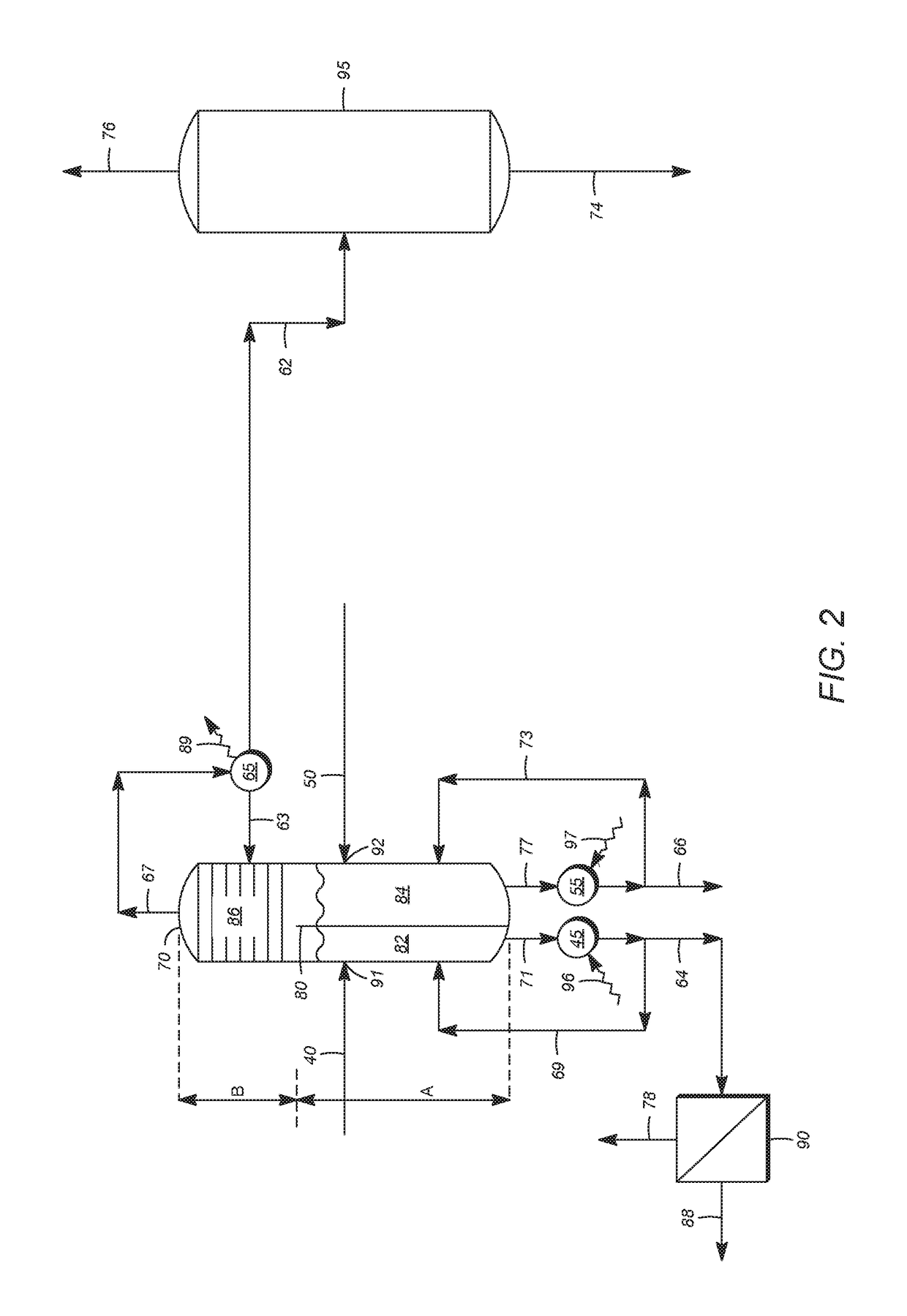Low pressure separator having an internal divider and uses therefor
a low pressure separator and internal divider technology, applied in the field of microorganism fermentation, can solve the problems of affecting the cost of these carbohydrate feed stocks, the inability to economically sustain the cultivation of starch or sucrose-producing crops for ethanol production in all geographies, and the potential to significantly affect productivity and overall economic viability, so as to improve heat integration, reduce equipment capacity and/or cost, and increase the effect of heat transfer
- Summary
- Abstract
- Description
- Claims
- Application Information
AI Technical Summary
Benefits of technology
Problems solved by technology
Method used
Image
Examples
Embodiment Construction
[0024]Exemplary embodiments of the invention are directed to biological conversion process comprising feeding a substrate to a bioreactor system comprising at least a first bioreactor including a culture medium and a bacterium to metabolize a carbon source in the substrate and produce at least one fermentation product. The processes further comprises withdrawing from the bioreactor system a bleed stream comprising C1-fixing bacteria, and also withdrawing from the bioreactor system a permeate stream obtained from filtration of a liquid product of the bioreactor system. The processes further comprise feeding the bleed stream and the permeate stream to a low pressure separator comprising a divider configured to isolate (e.g., separate, in a liquid tight manner), in a lower section, a liquid fraction of the bleed stream from a liquid fraction of the permeate stream. For example, the liquid fraction of the bleed stream may provide a first liquid volume in fluid communication with the ble...
PUM
| Property | Measurement | Unit |
|---|---|---|
| pressure | aaaaa | aaaaa |
| concentration | aaaaa | aaaaa |
| concentration | aaaaa | aaaaa |
Abstract
Description
Claims
Application Information
 Login to View More
Login to View More - R&D
- Intellectual Property
- Life Sciences
- Materials
- Tech Scout
- Unparalleled Data Quality
- Higher Quality Content
- 60% Fewer Hallucinations
Browse by: Latest US Patents, China's latest patents, Technical Efficacy Thesaurus, Application Domain, Technology Topic, Popular Technical Reports.
© 2025 PatSnap. All rights reserved.Legal|Privacy policy|Modern Slavery Act Transparency Statement|Sitemap|About US| Contact US: help@patsnap.com



